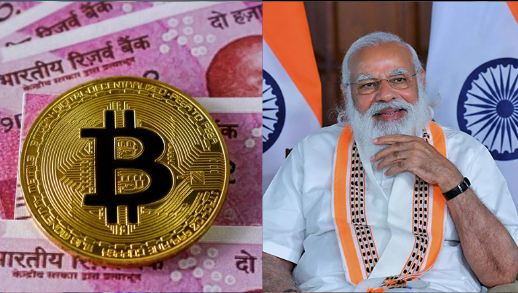Almost a month ago, the Modi government introduced ‘The Cryptocurrency and Regulation of Official Digital Currency Bill, 2021’ during the budget session of the parliament in order “to create a facilitative framework for the creation of the official digital currency to be issued by the Reserve Bank of India.”
Additionally, the bill also sought to “prohibit all private cryptocurrencies in India”, while, allowing certain exceptions “to promote the underlying technology of cryptocurrency and its uses.”
In the last few years, there has been much buzz around digital currencies, which includes cryptocurrency, virtual currency, and central bank digital currency. The volatility in the price of Bitcoin – the most popular digital currency of the world, has brought the discourse around digital currencies into popular discourse from the techno-financial world.
Given the central bank’s manipulation of the currency price simply by printing money, the libertarian block of the tech establishment always wanted to get rid of the government-regulated currencies, and this led to the creation of Bitcoin, Mazacoin, Titcoin, and so on.
However, given the fact that currencies have been one of the major functions of the government, the establishment is not ready to open it to the private players because it will lead to erosion of their power. Therefore, the emerging industrial powerhouses like China and India are not allowing privately held and traded digital currencies but coming up with a government floated and regulated digital currency.
The Communist government of China launched the first official digital currency of the world, which it sees as an alternative to the US dollar, amid the Coronavirus pandemic last year in June. Now even India is trying to come up with the same in the order to ensure that it is not left behind and the American digital currencies do not eat up its space.
The long tail of the US dollar:
For decades, emerging economies like China and India are trying to look for an alternative to the US dollar for international trade because its hegemony gives undue advantage to the American government.
Moreover, the exponential increase in the release of money by the Federal Bank of the United States and the spending by the American government (fiscal and monetary steps to revive the economy), is destroying the value of the dollar. The inflationary pressure of the US dollar due to fiscal and monetary stimulus since the financial crisis has erased billions of dollars of wealth for China and India because these countries have invested a lot of money in American debt.
In the early 2000s, Euro was being pushed as an alternative to the US dollar, but after the post-financial crisis, its influence only eroded and the dollar got further strengthened. In the 2010s, China tried to push Yuan as an alternative with very little success.
Digital Alternative:
The hegemony of the US dollar cannot be challenged by physical currencies, but digital currencies can emerge as an alternative to the same as seen in the case of Bitcoin. Therefore, first China came up with the digital Yuan last year, and now even India is coming up with its own national digital currency, with the same aim – to end the hegemony of the US dollar in international trade and its place as the global reserve currency.
In fact, China openly admitted the same. “A sovereign digital currency provides a functional alternative to the dollar settlement system and blunts the impact of any sanctions or threats of exclusion both at a country and company level. It may also facilitate integration into globally traded currency markets with a reduced risk of politically inspired disruption,” said China Daily, when the digital currency was launched.
Modi government’s push and the subsequent launch of digital currency, coupled with the growing size of the economy, would place India among the foremost global economic powers in the coming decade.
